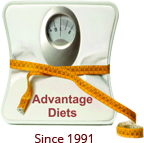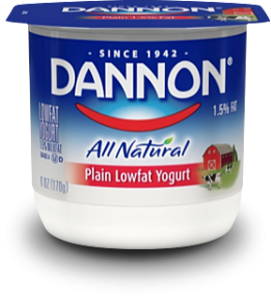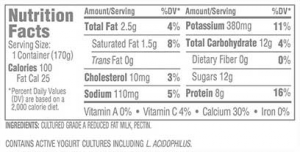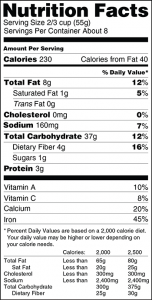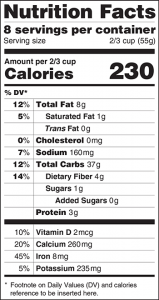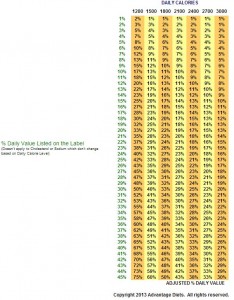It’s About Time – “Added Sugars” Finally To Be on Food Labels
Why did it have to take so long? We in the healthcare field have been crying for food labels to tell us how much sugar is being added to a food. In the past, when you bought a food that contained both naturally-occurring sugars and added sugars (for example, fruit yogurt), the grams of sugar on the label didn’t give you much information to go on.
Here’s a label from Dannon “Fruit on the Bottom” yogurt:
It states there are 24 grams of sugar. The only chance you had of figuring out what was added and what was naturally-occurring was to look at the label of plain yogurt.
Here we see 12 grams of sugar. Since plain yogurt doesn’t have any added sugar, we now know that in a 6-ounce container, there are 12 grams of naturally-occurring sugar known as lactose.
Now let’s compare the fruit yogurt with 24 grams of sugar with the 12 grams of lactose found in the plain yogurt. We can figure then that there’s about 12 grams of added sugar in the fruit yogurt. The amount of fruit in any fruit yogurt is nil so it’s not worth considering at the moment. That 12 grams of sugar represents 3 teaspoons of sugar. In other words, 10% of the calories in the fruit yogurt is plain sugar.
The FDA Finally Gets It
With the new proposed labels, you won’t have to do all that math or compare a plain version of a food with another that has sugar in it. The information will be there for you to see.
Current Label
Proposed Label
Notice the line “Added Sugars”. That’s what you need to keep an eye out for. Many studies have shown that the increase in obesity we’ve seen over the years is due, in part, to eating too much sugar. While we all know that a candy bar contains sugar, unless you were reading the ingredient list on such things as crackers, bread, ketchup, spaghetti sauce, etc., you might not have realized just how much sugar you were eating in a day’s time. Thankfully, now we all can make educated decisions because the information will be there for us to use.
% Daily Value
I’m pleased to see that the FDA has now listed the %DV more prominently on the label. When I wrote the book, Beyond Food Labels, in 1993, %DV had recently been added to the labels. But no one knew what they meant or how to use them. It basically is telling you that if you’re eating 2000 calories a day, the %DV is the percentage or amount you’re eating from that total. So, as with the above label, 15% of your daily allowance for Total Fat is being eaten.
While that’s great if you’re eating 2000 calories a day, what do you do when you’re eating fewer or more calories? That’s why I came up with the % Daily Value Converter.
Click for larger view of %Daily Value Converter
All you need to do is look at the label, check to see what the %DV is for whatever nutrient is of interest to you, find that percentage in the left-hand column of the Converter, then run your finger across the row to whatever number of calories you’re eating. You’ll notice that if you’re eating fewer calories than 2000, the %DV for you is going to be larger than what you see on the label.
Check out www.spinarecipe.com for healthy recipes.
